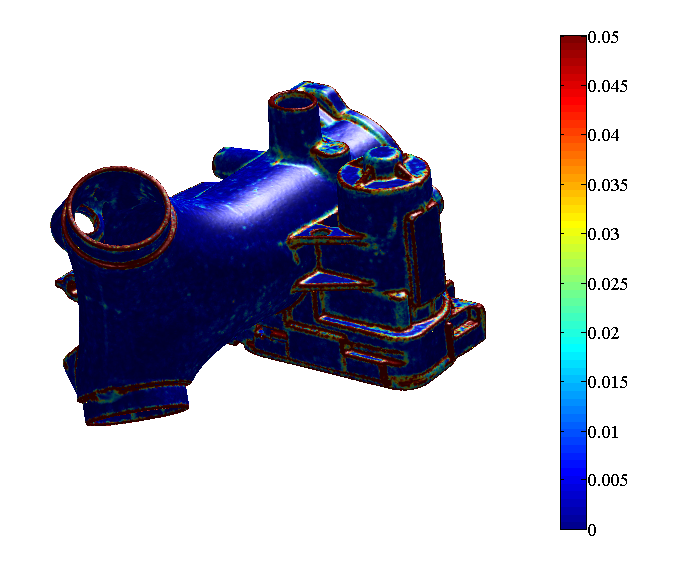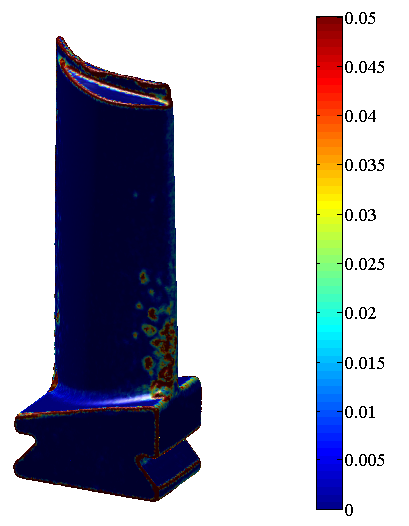Applied Differential Geometry for Tessellated Models
Characterization of methods for differential geometric properties evaluation in triangular meshes
This research activity deals with the investigation of the stability and the accuracy of the most important methods to estimate the differential geometric properties of tessellated surfaces. A set of test cases has been designed in order to investigate the sensitivity of those methods to factors such as noise in point location, surface typology), mesh resolution and mesh regularity. Based on the results obtained, some criticism of the analyzed methods is made and some guidelines are provided in order to choose the most robust and reliable method in relation to the surface typology, quality of the mesh and noise in point location.
Details of this research activity are reported in:
 Di Angelo L., Di Stefano P., "Experimental comparison of methods for
differential geometric properties evaluation in triangular
meshes".Computer - Aided Design and Applications, vol. 8 (2), 2011, p.
193-210, ISSN: 1686-4360.
Di Angelo L., Di Stefano P., "Experimental comparison of methods for
differential geometric properties evaluation in triangular
meshes".Computer - Aided Design and Applications, vol. 8 (2), 2011, p.
193-210, ISSN: 1686-4360.
Characterization of methods for differential geometric properties evaluation in triangular meshes C1 continuities detection in triangular meshes
The identification of C1 continuities is important in many applications involving point clouds or triangular meshes, such as
The methods in literature have some limitations which make them strongly dependent on some properties of the mesh (point typology, mesh resolution, uniformity of the shape of triangles and error in point location). Furthermore, some of them do not discriminate non-regular points from those that are inside a band around them.
- surface segmentation,
- inspection;
- rendering.
Our research group is developing a new method focused on the recognition of C1 continuities through the evaluation of a specifically defined function (smoothness function).
In the following figures screenshots (click to enlarge) of the map of the smooth indicator evaluated in real scanned objects are reported.
Only for academic research use, it is possible to have the implementation of this method by sending an email
to luca.diangelo@univaq.it.
Details of this research activity are reported in:
 Di Angelo L., Di Stefano P., "C1 continuities detection in triangular
meshes".Computer - Aided Design, vol. 42 (9), 2010, p. 828-839, ISSN:
0010-4485
Di Angelo L., Di Stefano P., "C1 continuities detection in triangular
meshes".Computer - Aided Design, vol. 42 (9), 2010, p. 828-839, ISSN:
0010-4485

